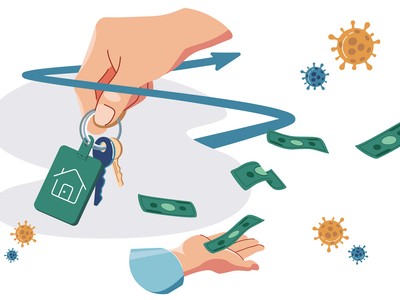At the recent COP 26 Summit 46 world leaders signed the “Global Coal to Clean Power Transition Statement” 1. This statement committed them to the rapid scale up of clean energy. But in the final minutes “unabated” was added to the coal commitments. The final version committed to phase out unabated coal power generation and to cease issuing inefficient subsidies for fossil fuels. The words “unabated” and “inefficient” were both late additions. But what does unabated mean and how significant an inclusion is it?
To abate is to make something less intense. Unabated coal is therefore power generation where no active steps are taken to reduce CO2 emissions.
In the case of coal, abatement generally refers to two distinct processes: Carbon Capture and Storage (CCS) and Carbon Capture, Utilisation and Storage (CCUS). In June 2021, the G7 meeting that took place in the UK declared “Unabated coal power generation refers to the use of coal that isn’t mitigated with technologies to reduce the CO2 emissions, such as CCUS” 2.
So what is carbon capture and how much does it actually mitigate CO2 output? CCS is the process of separating greenhouse gasses from non-greenhouse gases through the use of CO2 absorbing chemicals or membranes. Through this process CO2 can be captured at rates in excess of 90%. The CO2 is then transported in gas pipelines, ships or by land. Finally the gas is stored in permeable rock layers several thousand meters underground 3. This may sound a little sci-fi but this is actually in operation today. In fact, the US has 5,000 miles of CO2 pipelines currently in use and CCS presently accounts for the prevention of 40 million tonnes of CO2 per year *. CCUS is all together quite different. In this process, the CO2 is put to work. Industries such as the foods and beverage sector rely on CO2 for dry ice to transport foods. This may not lead to emissions reduction but it is a means of utilising the captured CO2 4. This is still beneficial because it replaces fossil carbon raw materials that would otherwise be used in these processes.
So how bad is coal? Coal-fired electricity generation accounts for 30% of all global CO2 5. However much coal may be seen as an older technology, its utilisation continues to grow. Whilst the average age of a coal fired station in the UK is 47 years old, coal powered plants with a capacity of 15Giga Watts were completed in China in the first half of 2021, and there are plans for further expansion. To put this into context, that is 3x the UK coal capacity introduced into China in a 6 month period. This was alongside the restarting of a further 24GW of capacity that had stopped during COVID-19 6. Here, China’s coal rich inland provinces and energy demanding coast conflict with global environmental targets. China did not sign the aforementioned COP 26 statement. In short, coal is both the single biggest contributor to CO2 emissions and on the rise.
To abate is to make something less intense. Unabated coal is therefore power generation where no active steps are taken to reduce CO2 emissions.
So what is the goal? The International Energy Agency (IEA) estimates that to meet the Paris Climate Accord’s net zero emissions target by 2050, CCUS deployment for coal would need to capture 430 million tonnes (Mt) of CO2 per year by 2030. However, based on projects currently in early and advance phases of development the potential capacity is set to reach a very disappointing 60Mt in 2030. When we look at the state of play today, the outlook is even bleaker. There is one commercial power plant equipped with CCUS in operation today, the Boundary Dam in Canada 7. The Boundary Dam has been in operation since 2014 and has capacity to capture 1Mt of CO2 per year.
But it isn’t all doom and gloom. The Boundary Dam may seem insignificant but this facility has proven to be an invaluable testing ground. The International CCS Knowledge Centre has undertaken a feasibility study with SaskPower (Boundary Dam operator) to determine if there is a business case to retrofit carbon capture onto a further 305MW power station. This retrofit would deliver the world’s second coal facility with a capacity to capture 2Mt of CO2 per year. This is achieved at a capital cost reduction of 67% per tonne of CO2 compared to the Boundary Dam. And this facility could operate at a capture rate of 97%. In addition, it is important to note that the physics and economics that govern the design and operation of thermal power plants is very similar throughout the world 8.
What this doesn’t mean however is that retrofitting every coal power plant is the immediate solution. The technology exists but it is very new and remains extremely expensive. This retrofit of the second SaskPower facility comes with a total initial investment of $1.5bn Canadian Dollars or roughly £900 million. At the recent COP26 summit in Glasgow much of the public debate was around the failure to deliver $100bn to developing nations affected by global warming after nations had agreed to do so at the Copenhagen Summit in 2008 9. There is not much hope therefore that sufficient capital exists to meet CCUS net zero targets even if the technology comes online. However, it’s not dead in the water. The hurdle at the moment is that there isn’t an economic case to implement this expensive technology. After all, why would an energy company fork out £1bn to retrofit a single coal power plant when there is then no return on that investment? The economics however might be about to change. The answer is tax. Carbon tax is tax imposed based on the amount of carbon emitted into the atmosphere as a result of human activity. If we look to Canada and the Greenhouse Gas Pollution Pricing Act 2021 as an example, there are present real life examples of countries imposing carbon pricing. Under Canada’s carbon tax, pricing starts at $15 per ton of carbon dioxide. For the SaskPower retrofit that would equal $30m in annual carbon tax savings. It would take 50 years to recover the initial $1.5bn investment, which is roughly equal to the life expectancy of a coal power plant. Could tax reform be the critical step required to meet net zero targets? Or are we looking at this in the completely wrong way?
Electing world leaders to deliver action seems better than gluing yourself to the M25.
By adding the word “unabated”, have world leaders inadvertently delayed or even stopped the transition away from coal by creating a new industry aimed at making coal less bad? After all, they have placed a great deal of hope on a technology that is nowhere near the stage required to meet near term environmental targets. Had the word “unabated” been excluded, as it was in earlier drafts of the agreement, would the focus instead be on the development of renewable and nuclear power capabilities?
Call me naive but I hope that when it comes to climate action the pen is mightier than the sword. Electing world leaders to deliver action seems better than gluing yourself to the M25. It seems like a summit such as COP 26 should bring about the global action that is needed in a cooperative manner. But when we look at this recent agreement it seems cowardly. China have not signed up and the inclusion of the word “unabated” places reliance upon a new and expensive technology that is not in wider use. This single word now seems likely to drive a technology revolution in efforts to extend the utilisation of coal power stations. Its intended purpose was to transition away from coal. Maybe when it comes to the environment it is better for a few nations to work towards a common goal. When there are too many world leaders in the room agreements might not just fail to meet their objective but do quite the opposite.
* This figure is for all CCS and is not specific to coal.
Gregor Maxwell
Assistant Manager, JM Finn
1 https://ukcop26.org/global-coal-to-clean-power-transition-statement/
2 https://www.g7uk.org/g7-leaders-commit-to-protect-planet-and-turbocharge-global-green-growth/
3 https://www.ccusnetwork.eu/carbon-capture-and-storage
5 https://www.iea.org/reports/global-energy-co2-status-report-2019/emissions
6 https://energyandcleanair.org/wp/wp-content/uploads/2021/08/China-Q2-briefing-coal-steel-CO2.pdf
7 https://www.iea.org/reports/ccus-in-power
9 https://www.ft.com/content/2fc0398d-c982-4214-b534-1ee3205cde97




